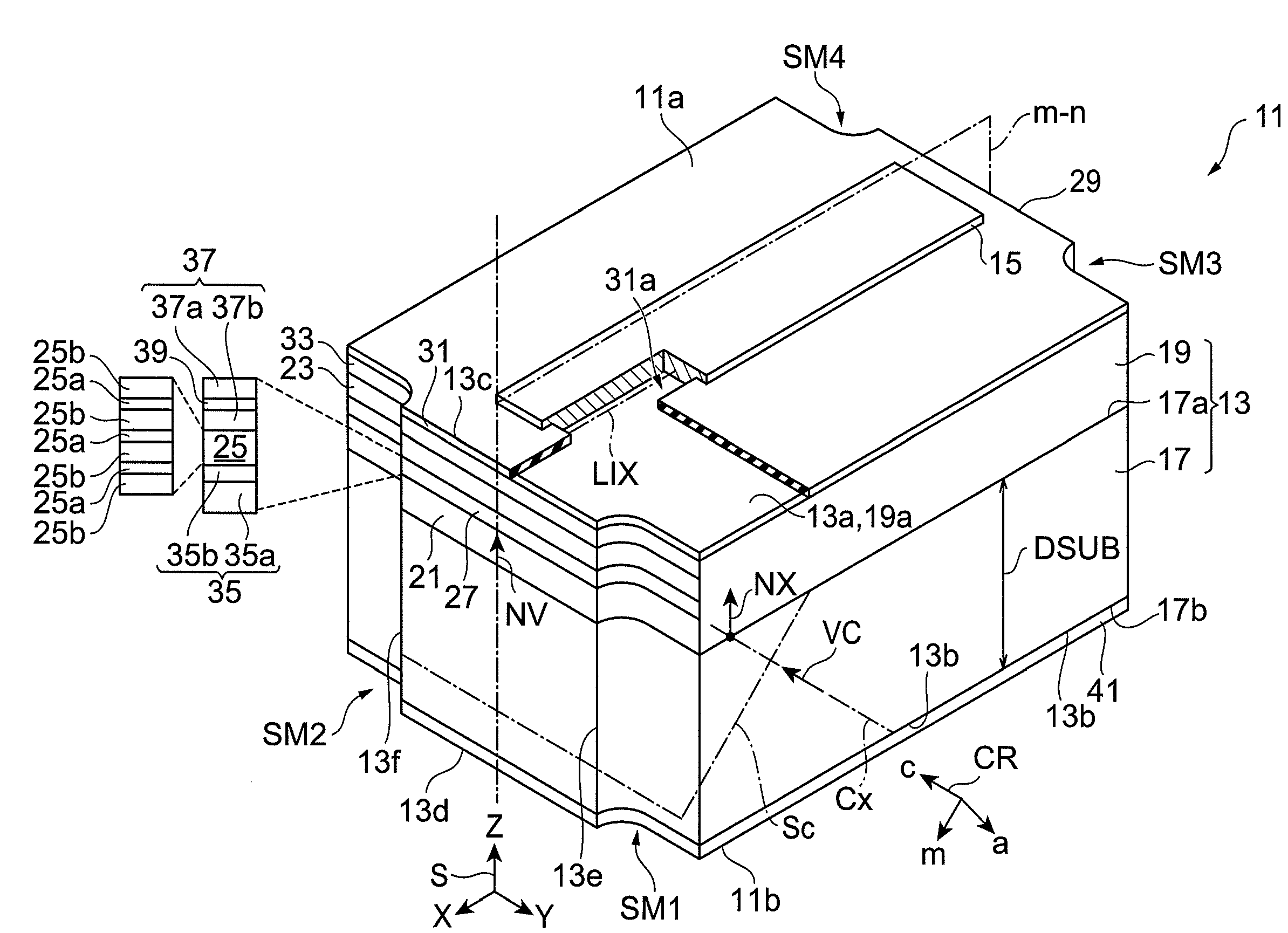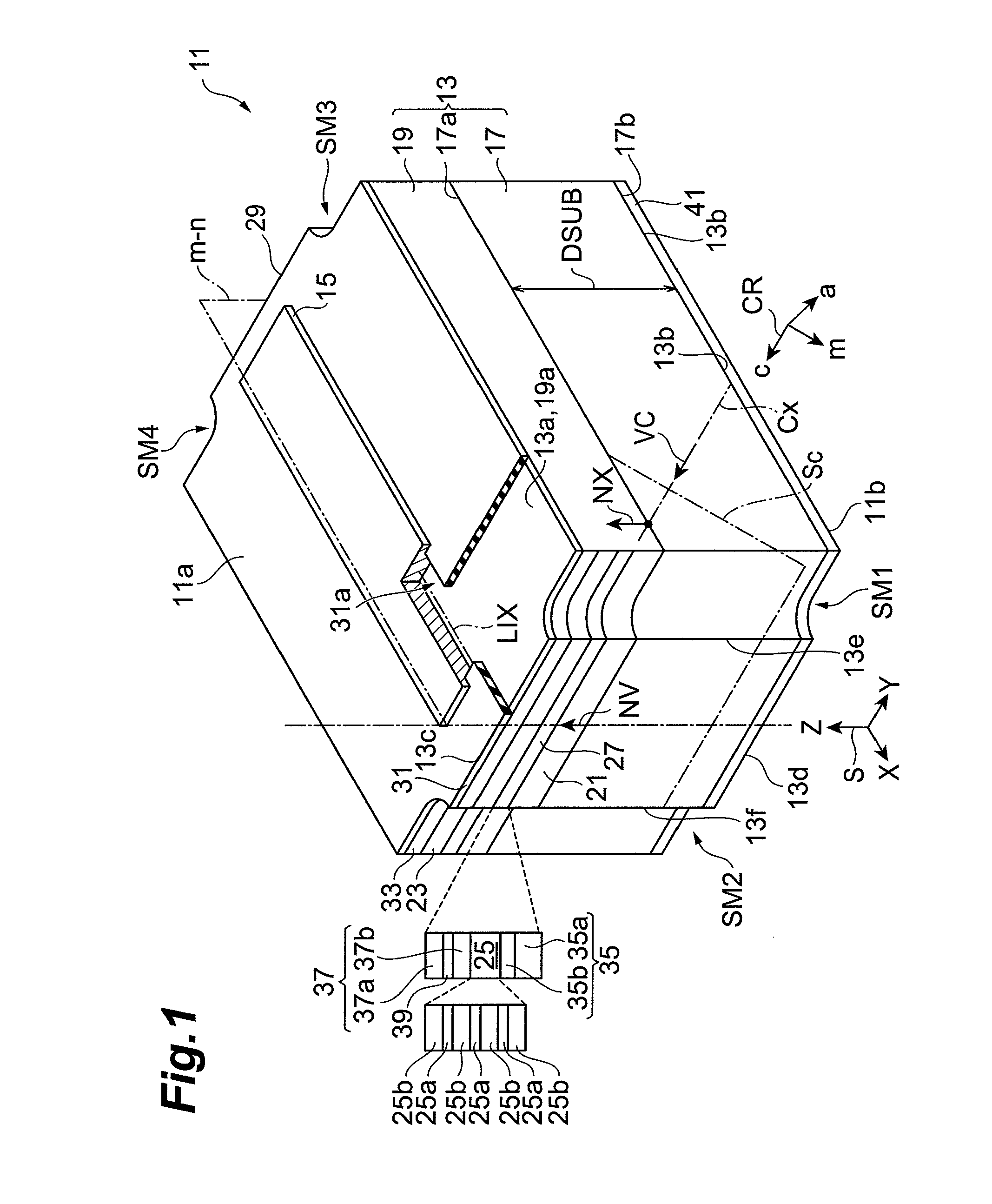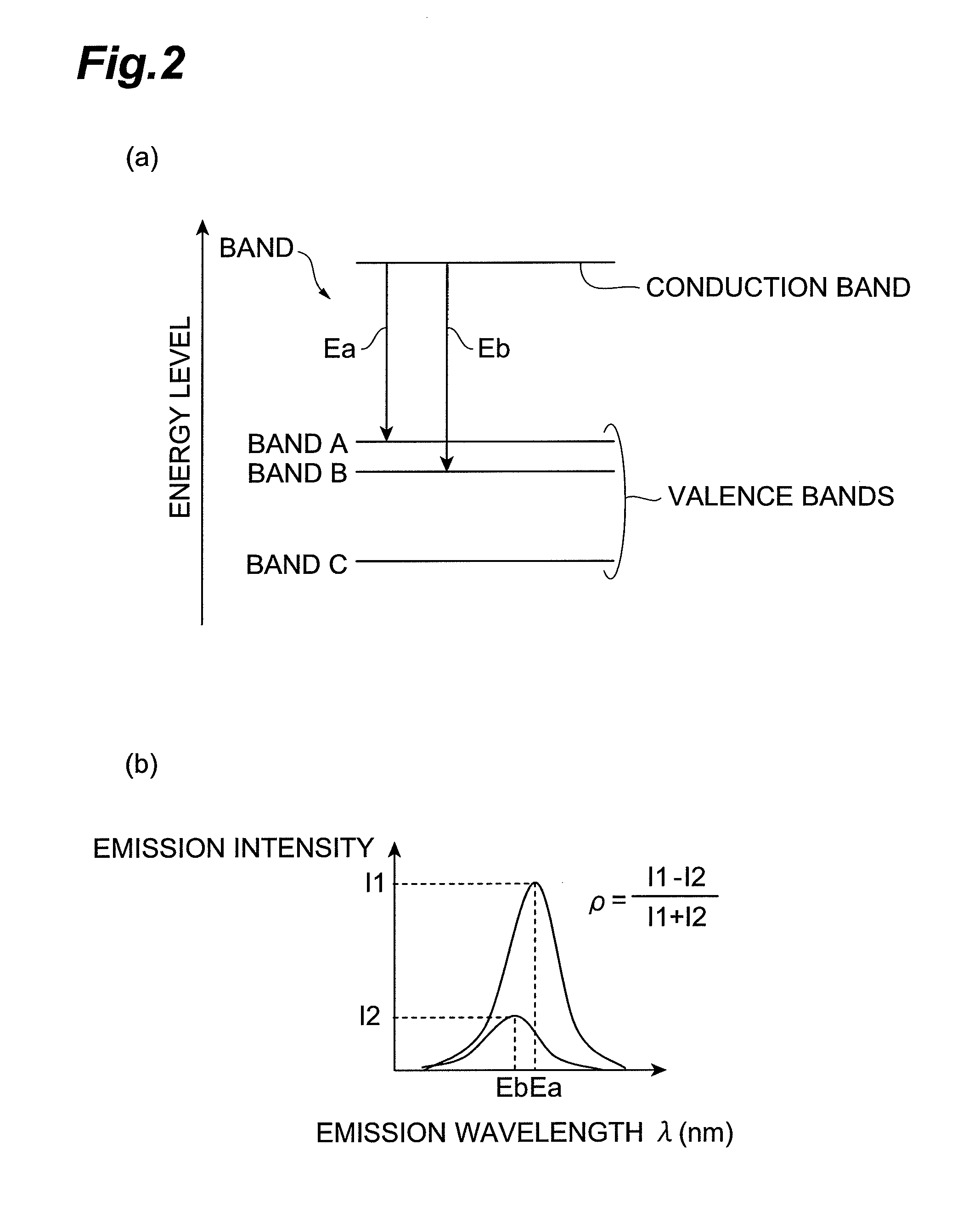Group-III nitride semiconductor laser device, and method for fabricating group-III nitride semiconductor laser device
a laser device and nitride technology, applied in semiconductor lasers, laser optical resonator construction, lasers, etc., can solve the problems of heavy process conditions, inability to use conventional cleaved facets in the orientation of laser waveguides, etc., and achieve the effect of reducing the damage and debris of an epitaxially grown surfa
- Summary
- Abstract
- Description
- Claims
- Application Information
AI Technical Summary
Benefits of technology
Problems solved by technology
Method used
Image
Examples
example
[0085]A laser diode shown in FIG. 7 is grown by organometallic vapor phase epitaxy as described below. The raw materials used are as follows: trimethyl gallium (TMGa); trimethyl aluminum (TMAl); trimethyl indium (TMIn); ammonia (NH3); and silane (SiH4). A substrate 71 is prepared. A GaN substrate is prepared as the substrate 71, and the GaN substrate is cut with a wafer slicing apparatus at an angle in a range of 0° to 90° to the m-axis from a (0001) GaN ingot thickly grown by HVPE, in such a manner that the angle ALPHA of the c-axis tilted toward the m-axis has a desired off angle in a range of 0° to 90°. For example, when the substrate is formed by cutting at the angle of 75°, the resultant substrate is prepared as a GaN substrate having a {20-21}-plane.
[0086]Before the growth, the substrate is observed by the cathodoluminescence method in order to estimate the stacking fault density of the substrate. In the cathodoluminescence, an emission process of carriers excited by an electr...
PUM
 Login to View More
Login to View More Abstract
Description
Claims
Application Information
 Login to View More
Login to View More - R&D
- Intellectual Property
- Life Sciences
- Materials
- Tech Scout
- Unparalleled Data Quality
- Higher Quality Content
- 60% Fewer Hallucinations
Browse by: Latest US Patents, China's latest patents, Technical Efficacy Thesaurus, Application Domain, Technology Topic, Popular Technical Reports.
© 2025 PatSnap. All rights reserved.Legal|Privacy policy|Modern Slavery Act Transparency Statement|Sitemap|About US| Contact US: help@patsnap.com



